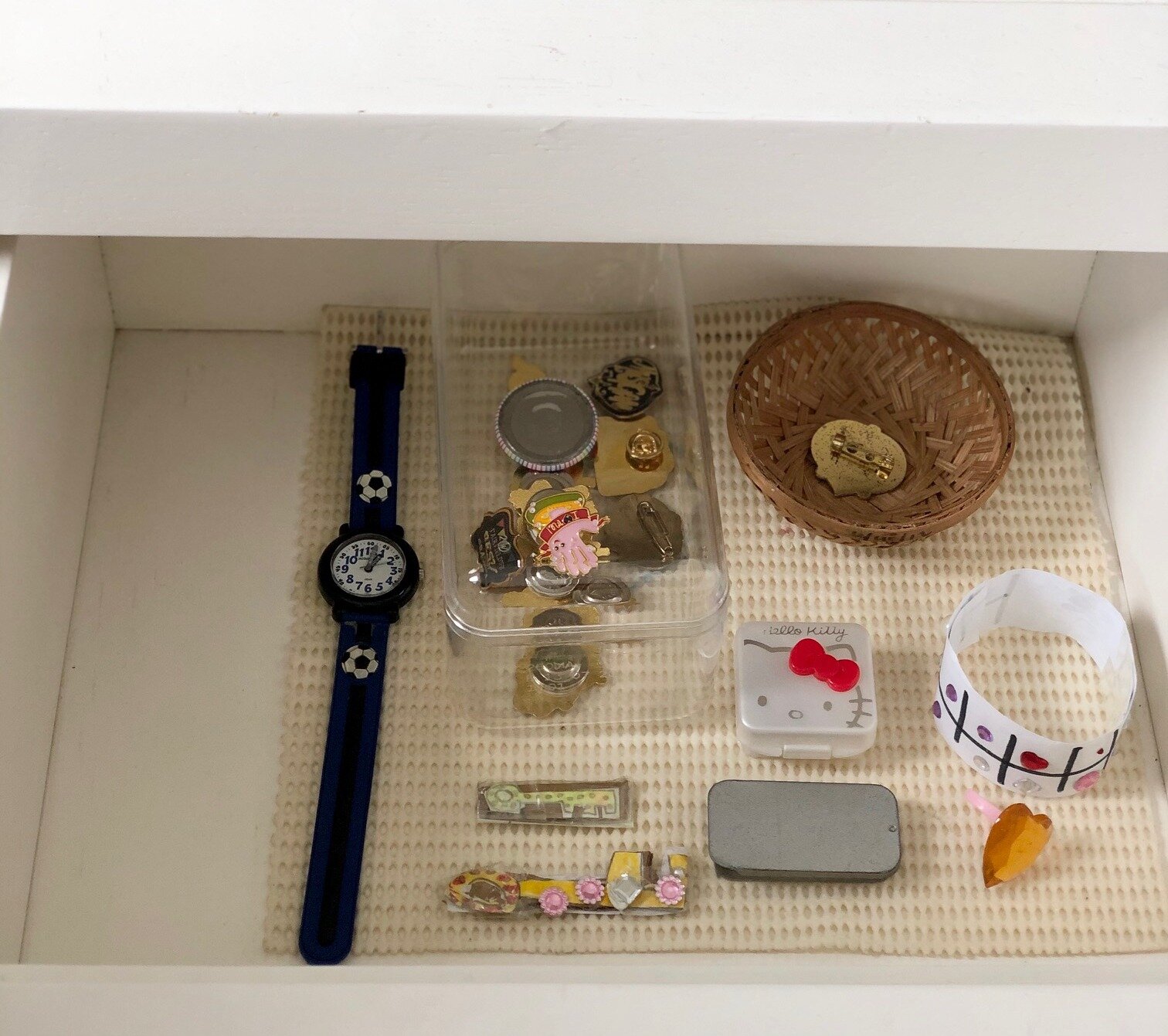KonMari and Montessori: A Perfect Match!
“The child who has felt a strong love for his surroundings and for all living creatures, who has discovered joy and enthusiasm in work, gives us reason to hope that humanity can develop in a new direction. Our hope for peace in the future lies not in the formal knowledge the adult can pass on to the child, but in the normal development of the new man" - Maria Montessori
Maria Montessori during her work with children, described what she called a "Prepared Environment" to be a space specially created keeping in mind the developmental needs of a child along with specific principles she developed. She mentions in her book 'The Secret Of Childhood' that "The first aim of the prepared environment is, as far as it is possible, to render the growing child independent of the adult".
When children are allowed to grow in an environment (be it at home or at school) where materials are designed to encourage independent movements based on their individual abilities, they grow to be self-reliant, confident and purposeful citizens of the community. Don't we all want that in our children?:)
During my AMI 3-6 Montessori Assistant training, I understood that a Prepared Environment has the following qualities:
It is a harmonious environment filled with beauty where children feel happy, secure, and able to adapt, explore and care for their surroundings independently
Every item in the Prepared Environment has a place of its own and curated based on the child's developmental need
It requires gentle care and constant maintenance (including fixing broken/torn items)
I have also been a huge fan of using Marie Kondo's organising and tidying principles in my home as the KonMari (adapted from her name) and Montessori principles complement each other beautifully. Integrating these 2 principles in creating a Prepared Environment for my children seemed like the perfect thing to do! (at the time of writing this post, I was a KonMari consultant-in-training)
Here's how you can too!
1. Model and demonstrate tidying and caring for your belongings (tackle your stuff first!):
Before we even begin thinking of organising, downsizing or tidying our children's things, it is vital to first introspect on our own tidying habits. Once we have completed our own 'tidying festival' (contact me if you need want to know more!) which is a once-in-a-lifetime tidying marathon that evaluates all our possessions, only then can we move on to our family members' belongings.
When I make my bed the first thing in the morning, put away the dishes after a meal or fold & put away my clothes, I do it silently and hope my children are close by so they're watching me. Before you know it, you will find your children interested to learn and attempt tidying as well. Start off by doing small tidying tasks alongside them consistently (this is important as only through the child's spontaneous repetition of a particular task will she/he be able to acquire that skill). As they get older they will eventually learn how to tidy and care for their things on their own, so be patient, have faith in your child's abilities and stay consistent in your efforts of supporting the habits you wish to inculcate in your child :)
Make putting away (a.k.a. tidying) part of your daily routine (ours is at the end of the day after dinner so I don't disrupt their play or when they're focusing on a project) and demonstrate kindly when things are not in the right place (see the next tip for how to categorise belongings).
In fact, show them you make mistakes too and how you problem solve (we're humans after all!) as these are important social skills to learn as well. Once, I forgot to put away the car keys in their designated spot in our home and spent a good amount of time looking for them (they were in my dress pocket). I narrated this to my children and it was adorable to see them offering suggestions on how we could do better next time!
2. Prepare their environment
Being organised and staying tidy should be a part of our own life (without pretense) if our children have to absorb these qualities from their home environment. Start modeling these habits when your children are young (even as young as birth). Children between the ages of 0 to 6 thrive in an environment that fulfills their biological need for order and routines. Organisation will come naturally from being in a home that makes them feel secure and gives them self-confidence as they move about independently in their prepared environment.
The KonMari tidying principles state that one should choose to keep only those things that give the most joy, contentment and comfort (and only later think of discarding). Once this step is complete, you can then decide how to store your belongings. One of the principles also state to tidy in the right order which begins with your child's clothes (this includes everything your child wears like hats, bags, shoes and other accessories) followed by their books, papers (health booklets, certificates), miscellaneous items (like toys, art/craft raw material, bed linen, bathroom/kitchen items) and lastly sentimental items (art, crafts, letters).
I urge you to think of having just a few pieces of each type of clothing/toys/books out so it encourages your child to choose what they want to use everyday (independently) without the overwhelm. Keep the rest away in a closet to rotate out as appropriate. But, do remember that a KonMari lifestyle is NOT the same as minimalism. It can be if you want it to be (most people misunderstand that it is the same). The KonMari principles encourage you to mindfully choose what brings YOU joy and the amount of things you ultimately keep is optimal to YOU and no one else.
If your child is too young to choose what "sparks joy", you could decide with your child or decide yourself (I always believe it is the parent who brings the said belongings into the home in the first place, and hence YOU have the power to make your home environment ideal for your child). Check out my previous blog post here to get some tips on how you can curate a minimalist home environment for you and your child if this kind of lifestyle is something you envision for yourself and your family too.
After choosing what your child loves, designate just one storage spot in your home and store "like" items together so that they can be accessed independently by your child. For example, t-shirts, shorts, coats or pants grouped together in their own categories. These could be arranged on low shelves, low hanger rods or low coat hooks. Don't forget to provide safe step stools wherever your child needs. I remember a Montessori guide telling us to sit down on the floor and imagine what our children see at their level and design their environment accordingly ;)
Label all their storage boxes! This could be in the form of handwritten stickers, labels made using a label maker or even laminated photos of the contents of the storage tray/box. This makes access easy and they are introduced to the written language as well. A Prepared Environment includes "a place for everything and everything in its place" (adapted from the workplace organising technique called the '5S technique'). As your child gets older, you don't need the labels as your child would've gotten accustomed to where belongings go.
Fold, hang or arrange items using the KonMari methods by storing items vertically in a square or rectangular box/drawer (we personally love the IKEA SKUBB boxes) or simple trays. My children love to fold their clothes and this is the easiest place to start your children on on their tidying journey. I avoid toy bins (except for my children's toy building blocks and soft toys) because it is hard to locate an item that you want without avoiding tipping all the contents out on the floor. Treating items with care and respect is an important value in our home.
3. Show gratitude and care
Encourage your child to give thanks and how to appreciate their belongings (model saying thank you to the eating accessories before eating a meal, to clothing when putting away in the laundry basket, to shoes when putting away in the shoe shelf etc). When it is time to let go of an item, discuss how to dispose of it responsibly to a charity where another child benefits from it or recycle it. If an item needs repair, demonstrate how to do the same.
Although tidying is NOT the same as cleaning (the former organises the mind while the latter purifies it according to Marie Kondo), once your child's things are organised, teach her/him how to maintain them. Provide child-sized cleaning equipment in locations accessible to your child (we personally love the Melissa and Doug broom & mop set and also have a small spray bottle with a child-sized rag for wiping down surfaces).
4. Collaborate and connect (before correction)
As mentioned earlier, working as a team when doing a "joy-check" on the items and putting things away makes it less-stressful for you and your child especially in the beginning stages of your child's tidying journey.
Ensure their vital needs are sorted such as hunger, fatigue or attention before tidying.
Involve them in decision-making when keeping and discarding their items.
Make tidying engaging and collaborative (work alongside them before they can do it independently).
Give yourself grace when things don't go as planned. Your relationship with your child is far more important than messes which are temporary.
5. Make their spaces ‘joy-sparking’
Encourage your child to decorate their favourite corner in the home (mutually agreed upon with you and the rest of the family) with their art work, nature finds or other sentimental items. This could be in their own room or other areas of your home. It could include their favourite books and chair to unwind after a busy day, to find peace or to calm down during an argument. Ultimately, it has to give them an opportunity to recharge or refresh with items that make them happy. My son has a drawer where he keeps his favourite badges from school (stored in a clear container that once contained chocolates) and his miniature creations. My daughter prefers a basket on her table for all her creations. These items lights them up every time they see them!
Which of the above suggestions resonated with you the most? Leave me a comment or connect with me on Instagram @globalmindfuljourney. I'd love to hear from you!




